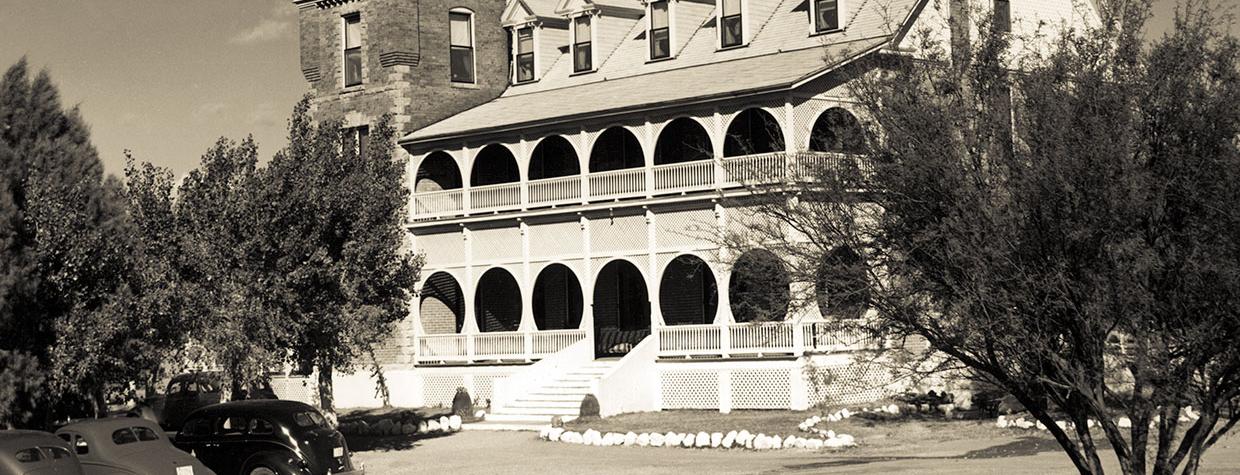What would you do if you found Eden? If you’re like the succession of people who bought land around the hot springs near Eden, Arizona, you’d build a spa resort — or perhaps a commune of sorts. The vision for Indian Hot Springs, this particular paradise northwest of Safford, seems to have changed with the times. So did the visitors, who are said to have included Territorial-era soldiers, well-to-do health seekers and a legendary rock band.
Gila Valley pioneer Ben Gardner first commercialized the attraction in the late 1870s, diverting the springs to the site’s first soaking pools, which were frequented by soldiers from nearby Fort Thomas. Then, Andrew and John Alexander replaced the tent cottages with a three-story hotel that opened in 1904.
The Alexanders added a pool 255 feet long and 70 feet wide, and they promoted the springs’ purported powers “to cure rheumatism, gout, dropsy, liver, kidney and stomach troubles, blood diseases and women’s ailments.” The brothers advertised activities such as croquet and lawn tennis, and they employed a former Texas Ranger and his pet bear to entertain guests.
Over time, the resort and pool grew. Oil exploration in the 1920s failed to produce the desired result, but it did tap into an artesian well that increased the springs’ daily flow by 750,000 gallons. “The desert is being transformed into a garden beyond the fondest dreams of the pioneers who selected the name,” a 1934 Arizona Republic article gushed. “The springs now have not only ample water for all possible baths, but water for irrigation, for providing constantly fresh water for the largest swimming pool in the state and for a beautiful fish pond larger than the average swimming pool.”
But by the 1960s, the bloom was off the rose. Merit Archibald and his wife bought the “erstwhile white elephant” and reopened it to guests. Archibald often greeted them shirtless, “trailed affectionately by an extroverted full-grown javelina named Rodney.” With chunks of plaster occasionally falling from the 12-foot ceilings, Archibald described the hotel’s architecture as “haunted house modern.” “I doubt if much has been changed, except towels and bed linen, since [1904],” he said.
In the 1970s, a collective called the Healing Waters Foundation bought the place, intending to create a center that served exclusively vegan fare and prohibited smoking, drinking and drugs. A relaxed attitude toward clothing gave the venture a reputation among locals as a nudist colony. In the 1980s, guests reportedly included the Rolling Stones.
By the early 2000s, the site was hosting retreats of all kinds, including for environmental groups. Then, in 2008, the more than century-old hotel burned to the ground, bringing a storied chapter to a close.

